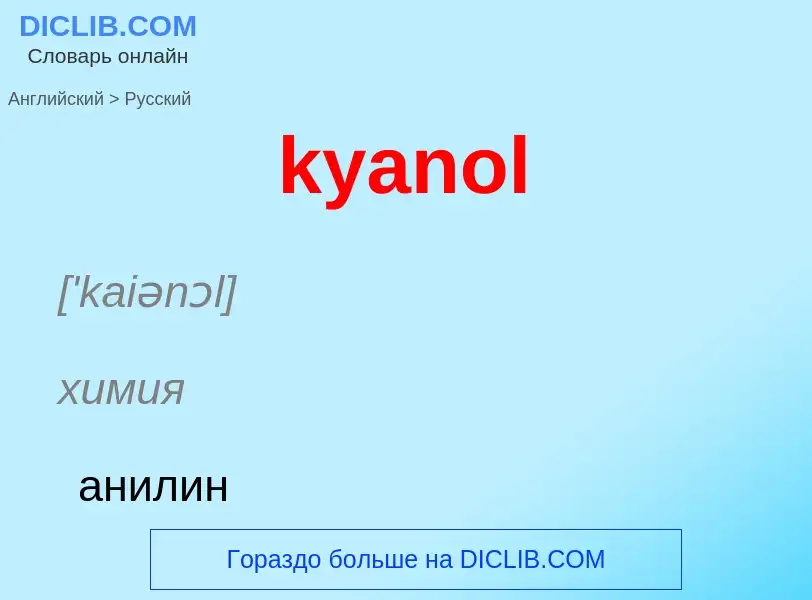Tradução e análise de palavras por inteligência artificial ChatGPT
Nesta página você pode obter uma análise detalhada de uma palavra ou frase, produzida usando a melhor tecnologia de inteligência artificial até o momento:
- como a palavra é usada
- frequência de uso
- é usado com mais frequência na fala oral ou escrita
- opções de tradução de palavras
- exemplos de uso (várias frases com tradução)
- etimologia
kyanol - tradução para russo
['kaiənɔl]
химия
анилин
существительное
химия
анилин
Wikipédia

Aniline (from Portuguese anil 'indigo shrub', and -ine indicating a derived substance) is an organic compound with the formula C6H5NH2. Consisting of a phenyl group (−C6H5) attached to an amino group (−NH2), aniline is the simplest aromatic amine. It is an industrially significant commodity chemical, as well as a versatile starting material for fine chemical synthesis. Its main use is in the manufacture of precursors to polyurethane, dyes, and other industrial chemicals. Like most volatile amines, it has the odor of rotten fish. It ignites readily, burning with a smoky flame characteristic of aromatic compounds. It is toxic to humans.
Relative to benzene, it is electron-rich. It thus participates more rapidly in electrophilic aromatic substitution reactions. Likewise, it is also prone to oxidation: while freshly purified aniline is an almost colorless oil, exposure to air results in gradual darkening to yellow or red, due to the formation of strongly colored, oxidized impurities. Aniline can be diazotized to give a diazonium salt, which can then undergo various nucleophilic substitution reactions.
Like other amines, aniline is both a base (pKaH = 4.6) and a nucleophile, although less so than structurally similar aliphatic amines.
Because an early source of the benzene from which they are derived was coal tar, aniline dyes are also called coal tar dyes.


![2,6-diisopropylaniline]], a colorless liquid when pure, illustrating the tendency of anilines to air-oxidize to dark-colored products. 2,6-diisopropylaniline]], a colorless liquid when pure, illustrating the tendency of anilines to air-oxidize to dark-colored products.](https://commons.wikimedia.org/wiki/Special:FilePath/2,6-(iPr)2C6H3NH2sample.jpg?width=200)
![[[Ball-and-stick model]] of aniline from the [[crystal structure]] at 252 K [[Ball-and-stick model]] of aniline from the [[crystal structure]] at 252 K](https://commons.wikimedia.org/wiki/Special:FilePath/Aniline-from-xtal-3D-balls.png?width=200)
![Cake of [[indigo dye]], which is prepared from aniline. Cake of [[indigo dye]], which is prepared from aniline.](https://commons.wikimedia.org/wiki/Special:FilePath/Indigo cake.jpg?width=200)
